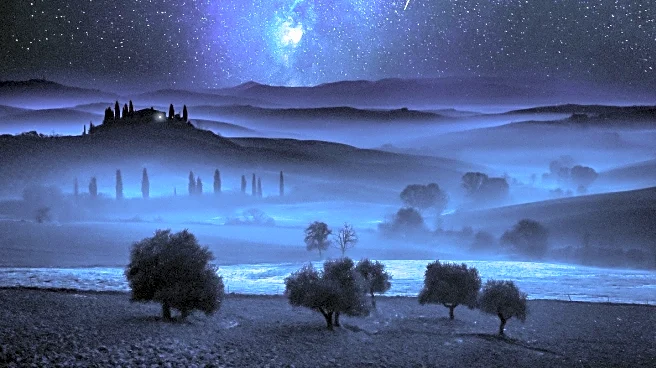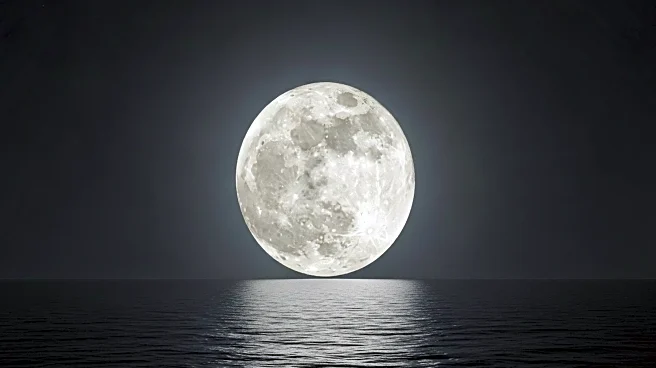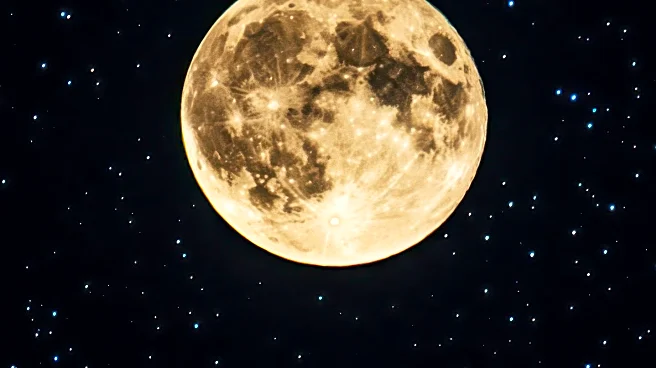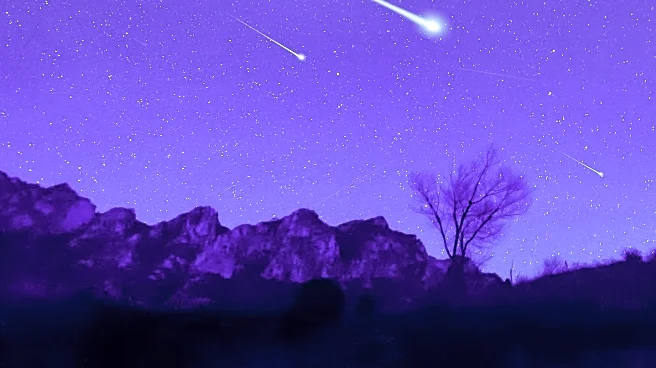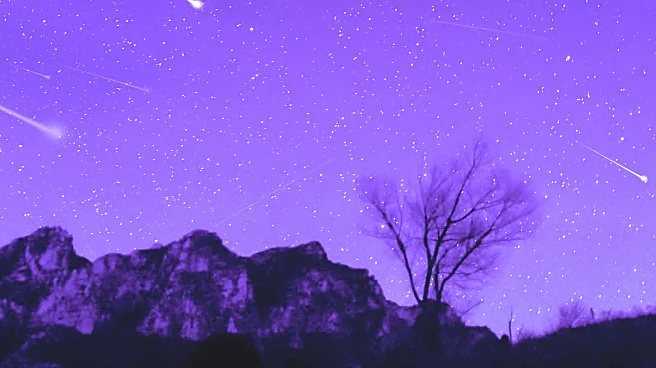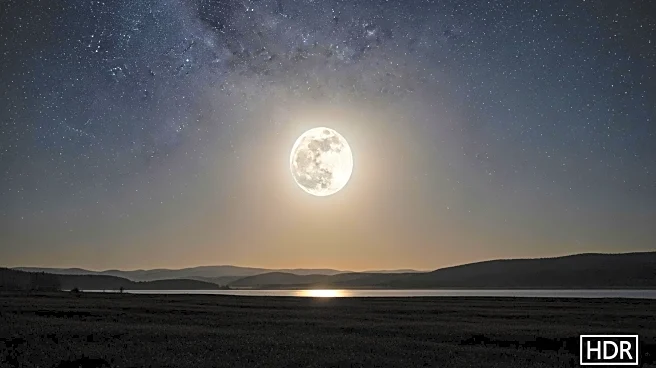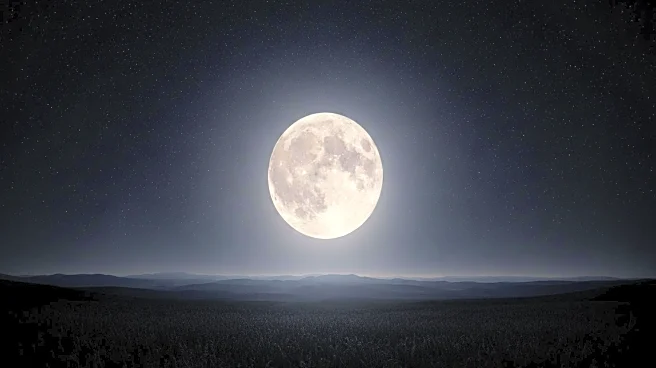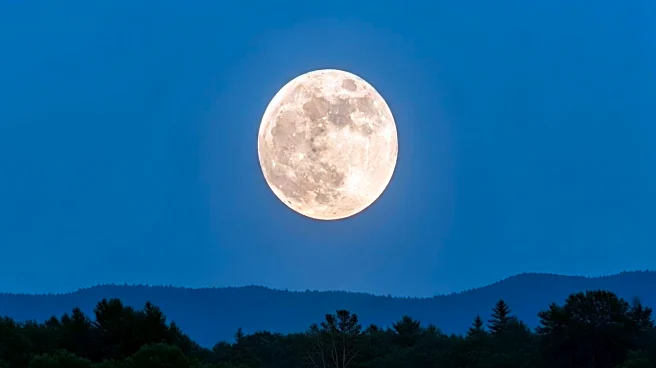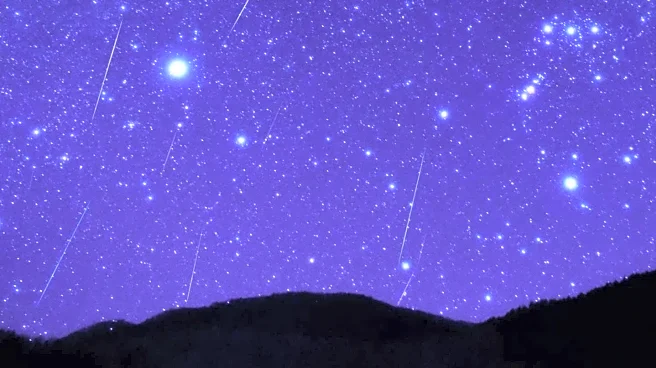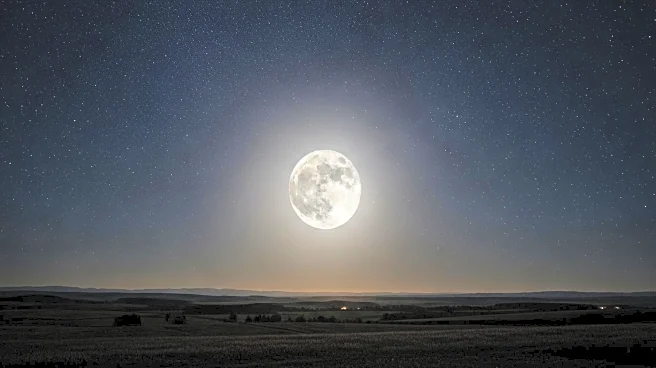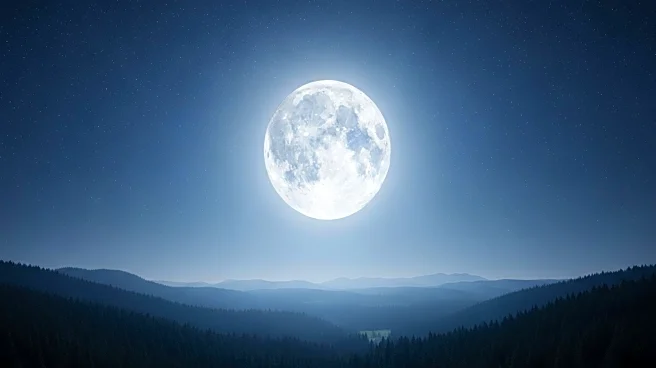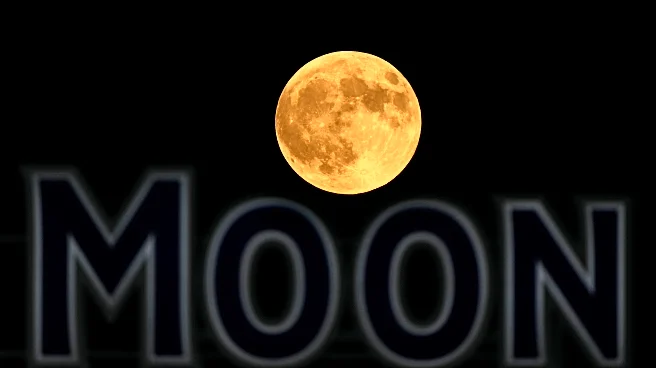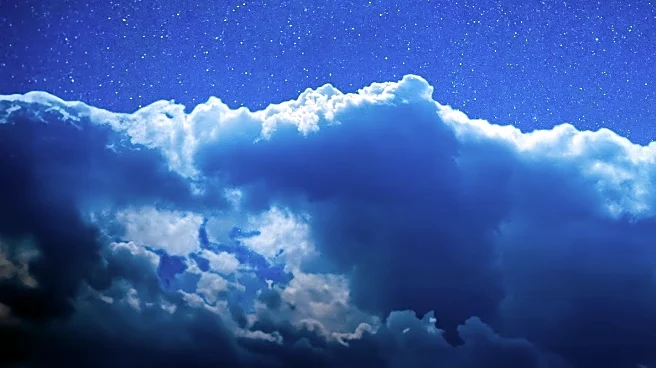What is the story about?
What's Happening?
The Draconids meteor shower is set to illuminate the night sky this week, providing a celestial spectacle for stargazers. Named after the Draco constellation, the meteors will be visible across the Northern Hemisphere, including the United States, Europe, Africa, and Asia. The shower results from debris left by the comet 21P Giacobini-Zinner burning up in Earth's atmosphere. The peak viewing time is expected on October 8, beginning at 19:00 UTC or 15:00 ET, with the potential to see up to 10 meteors per hour under ideal conditions. Unlike most meteor showers, the Draconids are best viewed in the evening, just after darkness falls. A waning gibbous moon will be present, which may affect visibility, but stargazers are advised to block out the moonlight for optimal viewing.
Why It's Important?
Meteor showers like the Draconids offer a unique opportunity for public engagement with astronomy and science. They can inspire interest in celestial phenomena and encourage educational activities related to space and the universe. For the scientific community, such events provide valuable data on cometary debris and atmospheric interactions. The widespread visibility of the Draconids across the U.S. and other regions makes it accessible to a large audience, fostering a shared experience and appreciation for natural wonders. Additionally, the timing of the shower in the evening makes it more accessible to families and individuals who may not typically stay up late for astronomical events.
What's Next?
Following the Draconids, stargazers can look forward to the Orionids meteor shower later in October, offering another chance to observe meteors. The Orionids are associated with Halley's Comet and are expected to peak around October 21. As with the Draconids, viewers are encouraged to find locations away from light pollution for the best experience. These consecutive meteor showers provide ongoing opportunities for public engagement and education in astronomy, potentially leading to increased interest in space exploration and science.
Beyond the Headlines
Meteor showers like the Draconids highlight the importance of preserving dark skies and reducing light pollution, which can significantly impact the visibility of celestial events. Efforts to protect natural night environments are crucial for both scientific research and public enjoyment of the night sky. Additionally, these events can serve as a reminder of the interconnectedness of celestial bodies and the dynamic nature of our solar system, prompting discussions on space exploration and the study of comets and asteroids.
AI Generated Content
Do you find this article useful?
